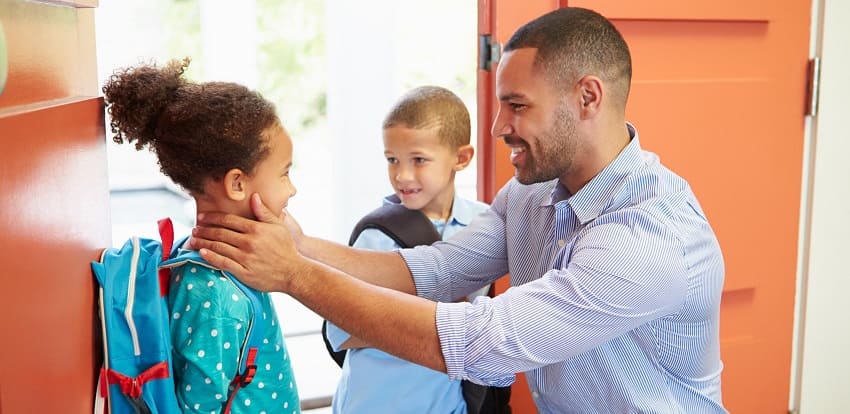Children react differently whenever it’s time they transition back to school. Some are happy to see their friend again, while others are sad about leaving the fun-filled and relaxed summer. Regardless of the child’s feelings, it is the responsibility of parents to prepare children for school and ensure they have a great experience. One of the parents’ responsibilities is to provide the child’s health safety, especially since those under 12 years cannot get the COVId-19 vaccine yet. This means schools and health officials should be deliberate about following COVId-19 safety measures. These include using a nose mask, social distance, regular washing of hands, etc.
Shopping for the Right Clothes
Summer break is usually a long and enjoyable one, so you can expect your child to add weight to the previous session. You may want to retake the child’s measurement, so you do not get out of track. The easiest way to go about this is by relaying the update or change of your child’s body size to the school. If the cloth does not fit in, the school can easily swap it with another available material.
It is proper to draft a budget or make a list to not spend beyond an allocated amount. Always go for quality and comfortable material, as it will prevent you from buying new pairs of clothes in the nearest future. Dresses can be expensive, especially when it is close to school resumption. It would help if you were an intelligent spender, so you can buy necessary back-to-school products your child may need. Also, cross-check that the school has not changed its dress code or uniform. Although many schools include polo t-shirt in their items, ensure it is still the same colors as the previous ones.
Engage Your Child in Some School Talks
Even for kindergartens, they need engagements and not some non-understandable instructions. Your child is not a robot nor a built-in machine that should automatically understand school is in session. In the real sense, the summer fun lingers around, affecting kids’ lack of concentration in school. Let your kids understand there will be a change in morning and night routines and why the difference is essential. Discuss what they will expect when they get back to school, especially the COVId-19 measures put in place.
Encourage your kids to disengage from activities that may increase the chance of contracting the infection. This will include handshaking, sharing toys, high five, hugs, and other related activities with classmates. You can pack disinfectants in your child’s bag to ensure safety at all costs. Prioritize your child’s health, and you would not have to worry about hospital bills. Also, you should take advantage of homework planner apps for your kids so they don’t feel overburdened with the work they have to do.
How You Can Get Free Supplies for Your Kids
If you need to buy a new pair of uniforms for your child and cannot afford it, what do you do? There are different financial statuses today, and not everyone can afford the school back-to-school requirements. Fortunately, there is a scheme to help parents with low financial income. You can apply to charitable organizations to ask for some donated items. However, this is not just parents’ duties, as teachers need to identify the proper organization. There are plans for students who cannot afford the basic materials for every educational establishment. Identify the requirements or how you can apply for such programs. Another thing is to contact your school’s district.
Sharing of Supplies (SOS)
In addition to the opportunities available for parents who cannot afford the necessary back-to-school items, there is a program known as the sharing of supplies (SOS) in schools. The SOS program allows parents to share supplies with their children. As mentioned before, the first point of contact should be your child’s school. However, some may want to turn you away if they realize you are ignorant about the options you are accessible to. You may also want to ask the school if you can get a cheaper alternative to any of the materials provided in the list.
Poverty is a severe issue that the World Health Organization is still tackling. However, a parent’s low income should not be enough reason why a child should not be in school. Hence, it is a collective effort of caregivers, parents, and school principals, to make the school comfortable for students as much as possible.

